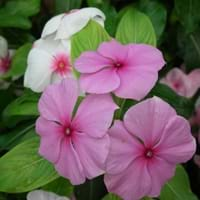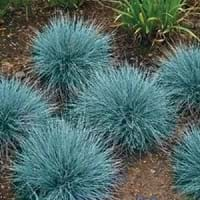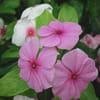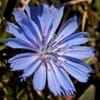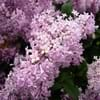Life Span
Perennial
Perennial
Type
Flowering Plants, Shrubs
Grass
Origin
Madagascar
World/Pandemic, North America, Europe, Russia/Siberia, Asia
Types
Purple vinca, Vinca, cherry red, strawberry color
Blue fescue, Large Blue fescue
Number of Varieties
Not Available
Habitat
Subtropical climates, Tropical regions
Moist Soils, Rocky areas, Well Drained
USDA Hardiness Zone
4-9
4-8
Sunset Zone
A1, A2, A3, H1, H2, 1a, 1b, 2a, 2b, 3a, 3b, 4, 5, 6, 7, 8, 9, 10, 11, 12, 13, 14, 15, 16, 17, 18, 19, 20, 21, 22, 23, 24
1a, 1b, 2a, 2b, 3a, 3b, 4, 5, 6, 7, 8, 9, 10, 11, 12, 13, 14, 15, 16, 17, 18, 19, 20, 21, 22, 23, 24
Habit
Clump-Forming
Clump-Forming
Flower Color
Magenta, Pink, Rose
Not Available
Flower Color Modifier
Not Available
Bicolor
Fruit Color
Not Available
Not Available
Leaf Color in Spring
Dark Green
Blue Green, Gray
Leaf Color in Summer
Dark Green
Light Green
Leaf Color in Fall
Dark Green
Blue Green, Gray
Leaf Color in Winter
Dark Green
Blue Green, Tan, Gray
Leaf Shape
Oval
Grass like
Plant Season
Fall, Spring, Summer, Winter
Spring, Summer, Fall, Winter
Sunlight
Partial shade
Full Sun, Partial Sun
Type of Soil
Loamy, Sandy, Well drained
Loam, Sand
The pH of Soil
Neutral, Slightly Alkaline
Acidic, Neutral
Soil Drainage
Well drained
Well drained
Bloom Time
Fall, Spring, Summer
Early Summer, Summer
Tolerances
Drought, Pollution, Salt
Drought
Where to Plant?
Container, Ground, Pot
Container, Ground
How to Plant?
Seedlings, Stem Planting, Transplanting
Seedlings
Plant Maintenance
Medium
Medium
Watering Requirements
Does not require lot of watering, Medium
Requires regular watering
In Summer
Lots of watering
Lots of watering
In Spring
Moderate
Moderate
In Winter
Average Water
Average Water
Soil pH
Neutral, Slightly Alkaline
Acidic, Neutral
Soil Type
Loamy, Sandy, Well drained
Loam, Sand
Soil Drainage Capacity
Well drained
Well drained
Sun Exposure
Partial shade
Full Sun, Partial Sun
Pruning
Prune ocassionally
Cut or pinch the stems, Remove dead leaves, Remove dead or diseased plant parts
Fertilizers
All-Purpose Liquid Fertilizer
Apply 10-10-10 amount
Pests and Diseases
Botrytis Blight, Canker, Crown rot, Pythium rot, Root rot
Red blotch
Plant Tolerance
Drought
Drought
Flowers
Yes
Insignificant
Flower Petal Number
Single
Single
Foliage Texture
Medium
Fine
Foliage Sheen
Glossy
Matte
Attracts
Butterflies
Birds, Butterflies
Allergy
Intestinal gas, Nausea, Vomiting
Not Available
Aesthetic Uses
Beautification, Showy Purposes
Ground Cover
Beauty Benefits
Not Available
Not Available
Environmental Uses
Air purification
Air purification, Provides ground cover
Medicinal Uses
Chest pain, High blood pressure, Inflammation, Sore throat, Tooth ache, Wounds
Not Available
Part of Plant Used
Whole plant
Flowers, Seeds
Other Uses
Decoration Purposes, Showy Purposes, Used as Ornamental plant
Used as Ornamental plant
Used As Indoor Plant
Yes
Insignificant
Used As Outdoor Plant
Yes
Yes
Garden Design
Bedding Plant, Container, Edging
Bedding Plant, Container, Feature Plant, Mixed Border, Rock Garden / Wall
Botanical Name
Catharanthus roseus
FESTUCA glauca 'Boulder Blue'
Common Name
Madagascar periwinkle or rosy periwinkle
Blue Fescue, Boulder Blue Fescue
In Hindi
Periwinkle
Boulder Blue Fescue
In German
Immergrün
Boulder Blau -Schwingel
In French
Pervenche
Boulder bleu fétuque
In Spanish
Bígaro
Boulder azul de la hierba festuca
In Greek
μυρτιά
Boulder μπλε γρασίδι φεστούκα
In Portuguese
Mirta
Boulder Blue Grass festuca
In Polish
Barwinek
Boulder niebieskie trawy kostrzewy
In Latin
Periwinkle
Hyacintho herba, lapidem fescue
Phylum
Mollusca
Magnoliophyta
Class
Gastropoda
Liliopsida
Order
Geraniales
Cyperales
Family
Apocynaceae
Poaceae
Genus
Catharanthus
Festuca
Clade
Not Available
Angiosperms, Commelinids, Monocots
Tribe
Not Available
Poeae
Subfamily
Not Available
Pooideae
Season and Care of Periwinkle and Boulder Blue Fescue
Season and care of Periwinkle and Boulder Blue Fescue is important to know. While considering everything about Periwinkle and Boulder Blue Fescue Care, growing season is an essential factor. Periwinkle season is Fall, Spring, Summer and Winter and Boulder Blue Fescue season is Fall, Spring, Summer and Winter. The type of soil for Periwinkle is Loamy, Sandy, Well drained and for Boulder Blue Fescue is Loam, Sand while the PH of soil for Periwinkle is Neutral, Slightly Alkaline and for Boulder Blue Fescue is Acidic, Neutral.
Periwinkle and Boulder Blue Fescue Physical Information
Periwinkle and Boulder Blue Fescue physical information is very important for comparison. Periwinkle height is 1.97 cm and width 2.96 cm whereas Boulder Blue Fescue height is 30.50 cm and width 25.40 cm. The color specification of Periwinkle and Boulder Blue Fescue are as follows:
Periwinkle flower color: Magenta, Pink and Rose
Periwinkle leaf color: Dark Green
Boulder Blue Fescue flower color: Not Available
- Boulder Blue Fescue leaf color: Blue Green and Gray
Care of Periwinkle and Boulder Blue Fescue
Care of Periwinkle and Boulder Blue Fescue include pruning, fertilizers, watering etc. Periwinkle pruning is done Prune ocassionally and Boulder Blue Fescue pruning is done Cut or pinch the stems, Remove dead leaves and Remove dead or diseased plant parts. In summer Periwinkle needs Lots of watering and in winter, it needs Average Water. Whereas, in summer Boulder Blue Fescue needs Lots of watering and in winter, it needs Average Water.
